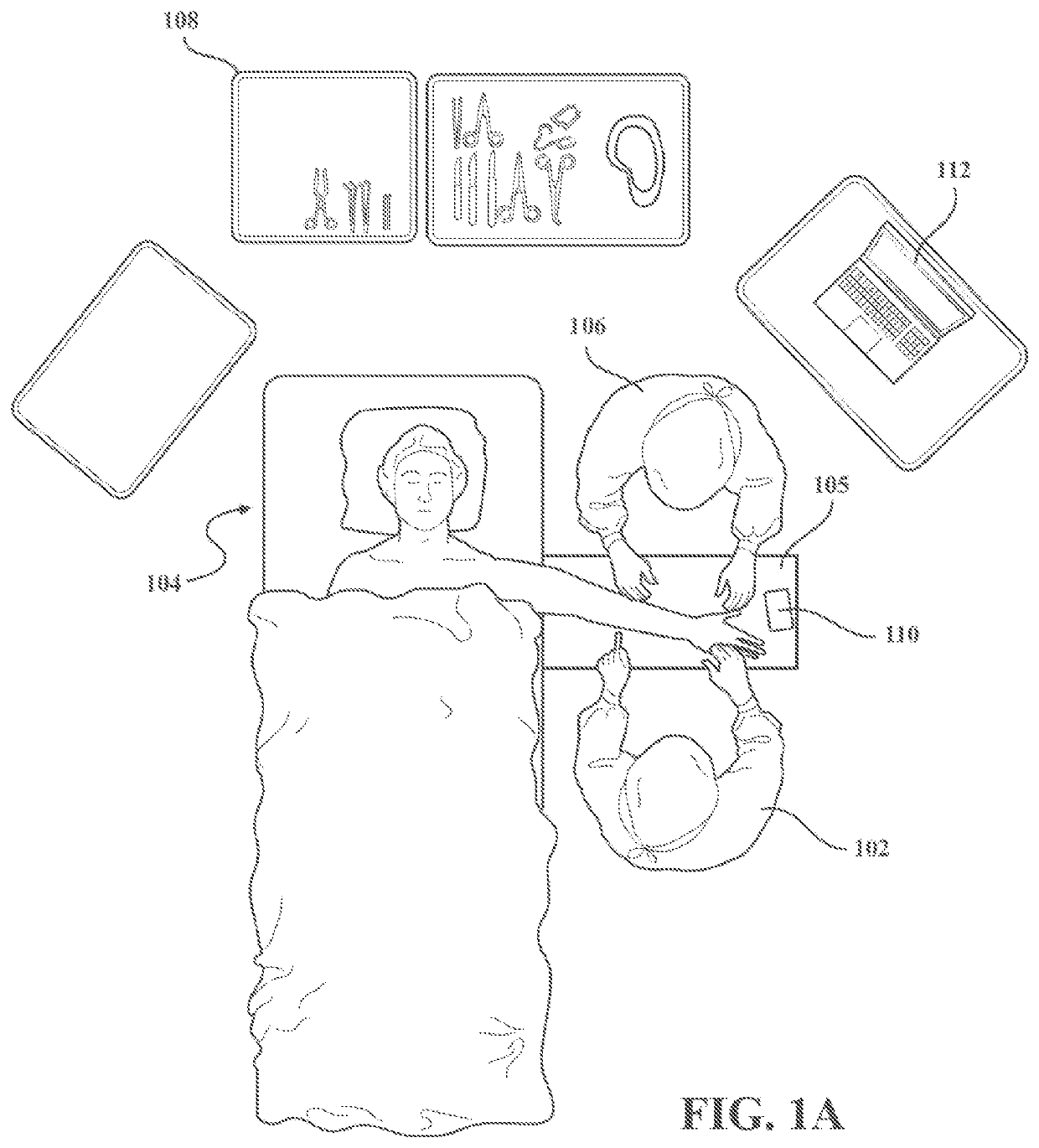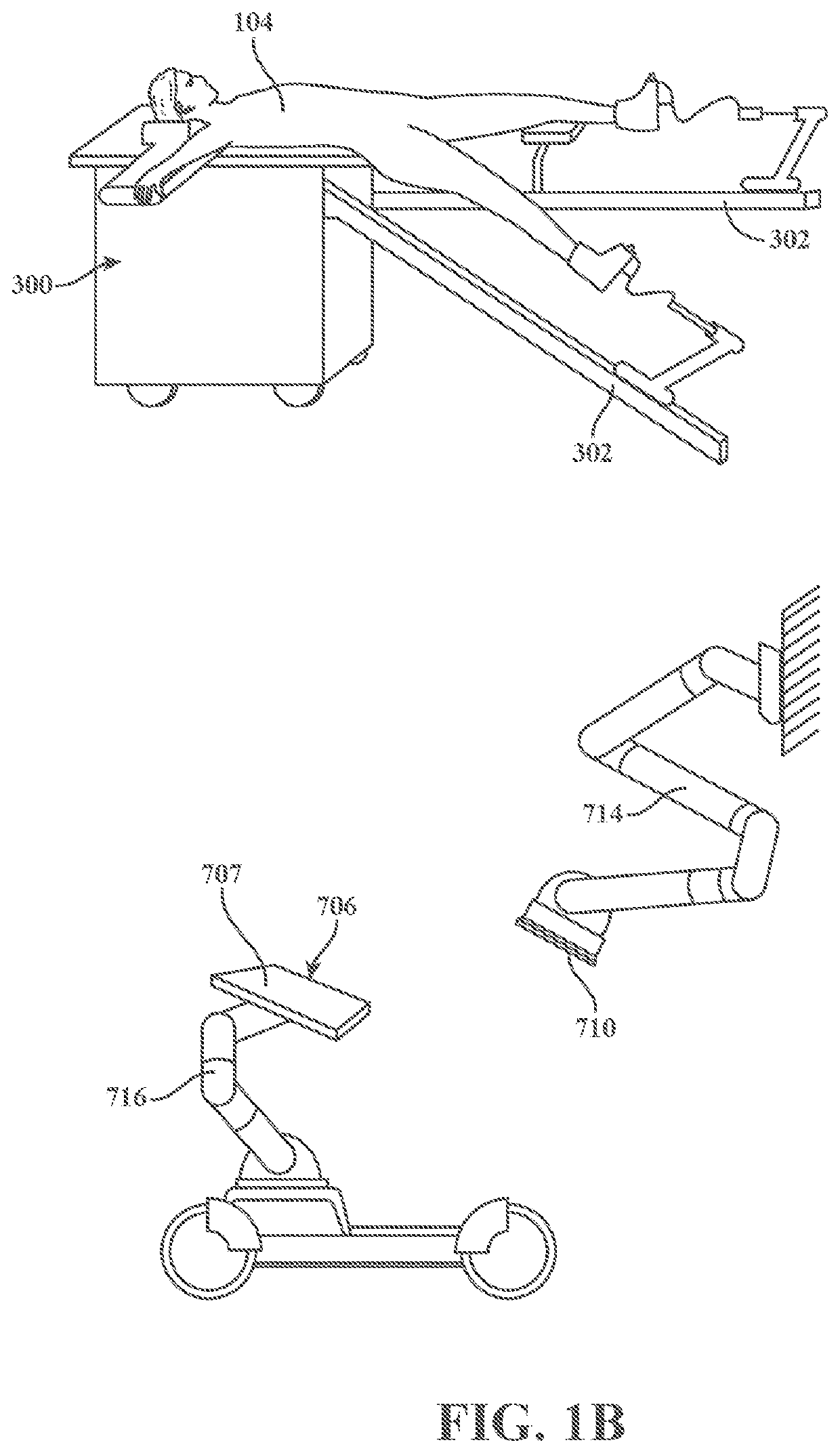Imaging systems and methods
a fluoroscopic image and imaging system technology, applied in the field of improved methods and systems for xray and fluoroscopic image capture, can solve the problems of increasing the cost of existing fluoroscopic machines, and increasing the cost of existing machines
- Summary
- Abstract
- Description
- Claims
- Application Information
AI Technical Summary
Benefits of technology
Problems solved by technology
Method used
Image
Examples
Embodiment Construction
[0110]FIG. 1A depicts an example of operating room layout for use of an imaging system in a standard surgery of an extremity case. In this example, the surgeon 102 is operating on the patient's left hand. The patient 104 is lying in the supine position with the left upper extremity prepped and draped on a hand table 105 in the abducted position. The surgeon sits adjacent to the patient's side while a surgical assistant 106 sits across the hand table adjacent to the patient's head. Surgical instruments and equipment are laid out on the back table 108 immediately behind the surgical assistant.
[0111]In one variation, the imaging system uses x-ray imaging. As such, a sterilized x-ray emitter 110 according to the invention is placed on the surgical hand table 105 for use. A monitor 112 is positioned on a stand immediately adjacent to the hand table whereby x-ray, fluoroscopic, thermal and digital images can be wirelessly transferred from the x-ray imaging system to the screen for surgeon...
PUM
 Login to view more
Login to view more Abstract
Description
Claims
Application Information
 Login to view more
Login to view more - R&D Engineer
- R&D Manager
- IP Professional
- Industry Leading Data Capabilities
- Powerful AI technology
- Patent DNA Extraction
Browse by: Latest US Patents, China's latest patents, Technical Efficacy Thesaurus, Application Domain, Technology Topic.
© 2024 PatSnap. All rights reserved.Legal|Privacy policy|Modern Slavery Act Transparency Statement|Sitemap



